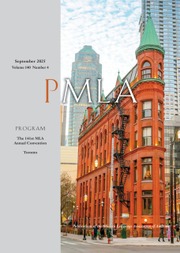No CrossRef data available.
Article contents
Black Skin, White Eyes: Spiritual Efficacy and Racial Animatedness in Yiimimangaliso: The Mysteries
Published online by Cambridge University Press: 01 September 2025
Abstract
This essay considers a 2000 production of the Chester Mystery Cycle by the South African theater company Isango Ensemble. Through its use of a syncretic, decolonial aesthetic, Yiimimangaliso: The Mysteries functioned as a surrogation of the medieval mystery cycle tradition toward new ends in the context of the collapse of apartheid and the birth of the new South African democracy under the banner of “Rainbow Nationhood.” In tracing its syncretic use of indigenous aesthetics, its creation alongside the Truth and Reconciliation Commission, and its disparate domestic and Western receptions, I interrogate how phenomenologies of race functioned to reanimate a sense of spiritual efficacy that links the legacy of medieval religious drama with the alterity of black, non-Western subjects under a racialized notion of the unmodern.
Information
- Type
- Essay
- Information
- Copyright
- © 2025 The Author(s). Published by Cambridge University Press on behalf of Modern Language Association of America

